Featured Articles
The SCP Summer Premier Auction
August 23 was the final day of bidding for SCP’s “Summer Premier Auction.”
SCP Auctions was founded in 1979 and is one of the largest auctioneers and private sellers of sports memorabilia and cards in the United States. Its past sales have included:
* A T206 Honus Wagner tobacco card graded PSA NM-MT 8 – $2,800,000
* A Babe Ruth game-worn (circa 1920) road jersey – $4,415,000
* The bat (later signed by Ruth) that Babe Ruth used on April 18, 1923, to hit the first home run in Yankee Stadium – $1,265,000
* The contract for the sale of Babe Ruth from the Boston Red Sox to the New York Yankees – $996,000
* The ball hit by Barry Bonds for career home run #756, breaking Hank Aaron’s all-time home run record – $752,467
Where the sweet science is concerned, SCP auctioned off “The Angelo Dundee Collection” of boxing memorabilia in November 2012 for more than $1,300,000. Two pairs of gloves worn by Cassius Clay / later Muhammad Ali in his first fight against Sonny Liston and his first fight against Joe Frazier sold for $385,848 each.
That brings us to SCP’s 2014 Summer Premier Auction. Fifty-nine boxing-related items were on the block. Some of them are cause for concern.
Let’s start with the following as described by SCP in its auction catalog:
* Lot #114: “WILLIE PEP’S 1940’S TRAINING WORN GLOVES AND EVERLAST HEAD GEAR”
* Lot #112: “C.1942 WILLIE PEP FIGHT WORN EVERLAST BOXING GLOVES”
* Lot #115: “NOVEMBER 6, 1957 ALPHONSE HALIMI FIGHT WORN BEN LEE BOXING GLOVES – 15 ROUND DECISION VS. RATON MACIAS”
* Lot #95: “C.1910 JIM JEFFRIES FIGHT WORN EVERLAST BOXING SHOES”
Craig Hamilton is the foremost boxing memorabilia dealer in the Unted States. Over the years, he has been retained by Sotheby’s, Christie’s, Heritage, and numerous other auction houses to document and authenticate memorabilia prior to auction.
This writer reached out to Hamilton, who had this to say about the items listed above:
* [Lot #114, which sold for $720] “The Everlast label on the head gear has an ‘R’ with a circle around it to protect the Everlast trademark. Everlast didn’t add that ‘R’ to its headgear until 1966. That means the headgear couldn’t possibly have been worn by Pep in the 1940s.”
* [Lot #112, which sold for $1,320] “These gloves were made by Everlast and stamped ‘24 14,’ which indicates that they’re 14-ounce gloves. Pep wore 6-ounce gloves in fights.”
* [Lot #115, which sold for $1,253] “This was a tough fifteen-round fight. The gloves Halimi wore were heavily taped above the label, which is shown in the pictures that SCP has on its website. Anybody who knows anything about boxing memorabilia and stopped to think about it would know that these aren’t the gloves Halimi wore in that fight. The real gloves would show some tape residue or leather-surface removal after fifteen rounds of sweat and the like.”
* [Lot #95, which sold for $1,200]: “These are supposed to be fight-worn Jim Jeffries boxing shoes that have an Everlast label inside them. Initially, SCP described them as being ‘circa 1900.’ Then it learned that Everlast didn’t come into existence until 1910, so it added an addendum to the catalog saying that the shoes were ‘circa 1910.’ The problem with that is, Everlast didn’t make boxing equipment in 1910. They started making it in 1917, long after Jeffries’ career was over.”
There’s more.
Lot #102 purports to be a “C.1926 GENE TUNNEY ‘THE FIGHTING MARINE’ FIGHT WORN BOXING ROBE.” It sold for $15,052.
“How do they know that Tunney wore this robe in a fight?” Hamilton asks. “Over the years, I’ve looked at every film of Gene Tunney in the ring that I could find. I have 200-to-300 photos of Tunney in the ring before and after fights. And I’ve I never seen him standing in the ring wearing a robe. Every image I’ve seen shows him wearing a towel over his shoulders, not a robe.”
“And I have problems with some of the other items,” Hamilton continues. “Lots 100 and 101 purport to be the gloves that Jack Dempsey wore in his 1918 fight against Fred Fulton and his 1927 fight against Jack Sharkey. They’re autographed by Dempsey. The first pair sold for $18,840; the second pair for $22,796. I don’t question that the handwriting is Dempsey’s. But Dempsey was a prolific giver-away of boxing memorabilia that wasn’t what he said it was. He’d give something to someone and tell them it was something that it wasn’t to make them feel good.”
Each of the auction items referenced above came with a Letter of Provenance stating that it had been in the “Helms Athletic Foundation/LA84 Collection.” The Helms Athletic Foundation was created in 1936 and went through several incarnations before being dissolved and its holdings absorbed into the Amateur Athletic Foundation (renamed the LA84 Foundation in 2007).
“Just because these pieces were in something called the Helms Athletic Foundation collection doesn’t mean that they’re real,” Hamilton says. “There’s no indication that experts were used to authenticate any of the boxing items in the collection with the exception of PSA/DNA for autographs. Did these guys look at old fight films? Did they look at old photos? Did they weigh the gloves or contact Everlast? Essentially, they’re saying that, because these items came from the Helms Athletic Foundation, that authenticates them. This is an old auction practice, but it doesn’t cut it today. There are several items in the auction that can’t possibly be what SCP says they are. So what does that say about the other items in the auction? I’m sure that most of them are authentic, but I would speculate that some aren’t.”
SCP vice president Dan Imler acknowledged to this writer that SCP didn’t hire an outside expert to authenticate the boxing memorabilia in its 2014 Summer Premier Auction.
“That’s something we do on a case by case basis,” Imler said. “Here, we didn’t think it was necessary because we relied on the Helms archives and its records for authentication. We take authentication very seriously, but we’re not perfect. If there are problems, we’ll notify the purchasers and make whatever corrections need to be made.”
Meanwhile, Hamilton has no plans to pursue the matter. “I’m not the auction police,” he says. “But I hate it when stuff like this happens.”
One might add that SCP isn’t some hustler selling phony memorabilia on eBay, where the prevailing ethos is “buyer beware.” To quote the SCP website, “SCP Auctions, one of the nation’s largest auctioneers and private sellers of important sports memorabilia and cards, is a leader in the industry.”
Thomas Hauser can be reached by email at thauser@rcn.com. His next book – Thomas Hauser on Boxing – will be published shortly by the University of Arkansas Press.
-

 Featured Articles4 weeks ago
Featured Articles4 weeks agoThe Hauser Report: Zayas-Garcia, Pacquiao, Usyk, and the NYSAC
-
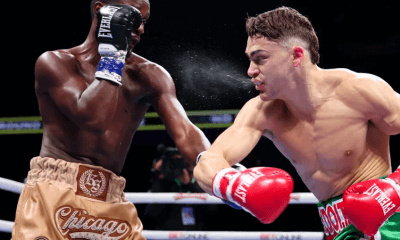
 Featured Articles3 weeks ago
Featured Articles3 weeks agoOscar Duarte and Regis Prograis Prevail on an Action-Packed Fight Card in Chicago
-
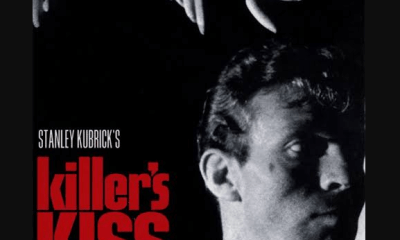
 Featured Articles2 weeks ago
Featured Articles2 weeks agoThe Hauser Report: Cinematic and Literary Notes
-
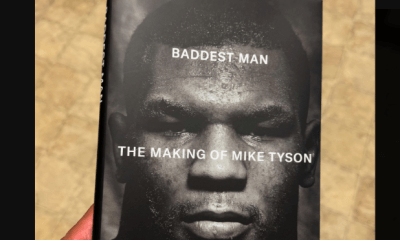
 Book Review2 weeks ago
Book Review2 weeks agoMark Kriegel’s New Book About Mike Tyson is a Must-Read
-

 Featured Articles4 weeks ago
Featured Articles4 weeks agoRemembering Dwight Muhammad Qawi (1953-2025) and his Triumphant Return to Prison
-
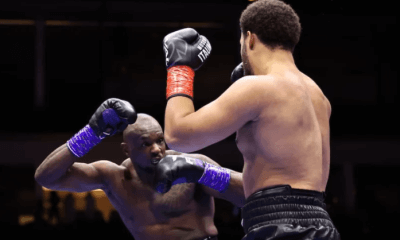
 Featured Articles7 days ago
Featured Articles7 days agoMoses Itauma Continues his Rapid Rise; Steamrolls Dillian Whyte in Riyadh
-
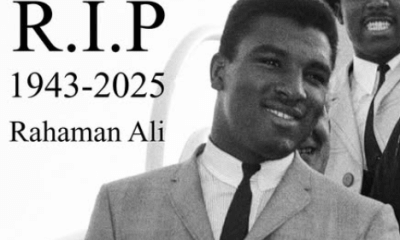
 Featured Articles3 weeks ago
Featured Articles3 weeks agoRahaman Ali (1943-2025)
-

 Featured Articles3 weeks ago
Featured Articles3 weeks agoTop Rank Boxing is in Limbo, but that Hasn’t Benched Robert Garcia’s Up-and-Comers













